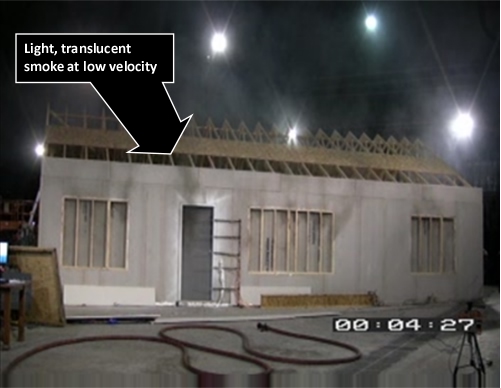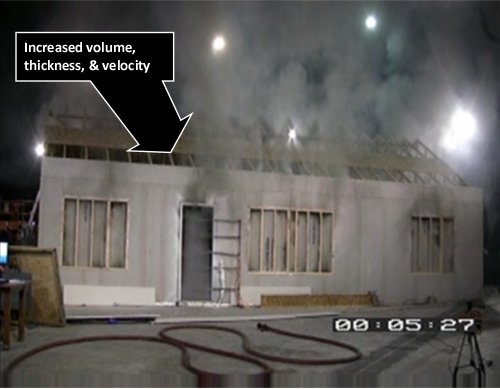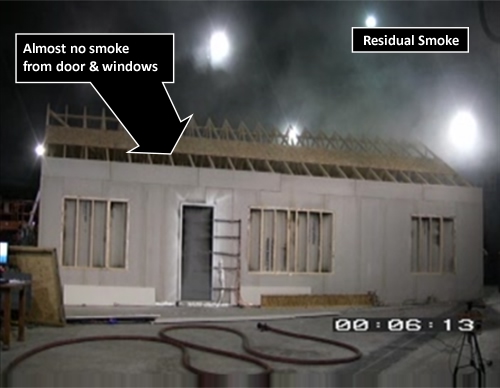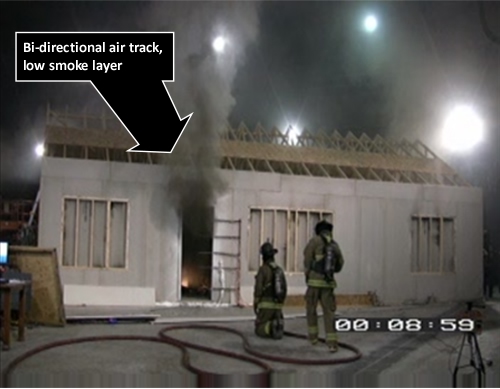Hazards Above: Part 3
My last two posts (Hazards Above, Hazards Above: Part 2)examined a series of incidents involving firefighter injuries or near miss incidents involving fires occurring in or extending into void spaces in wood frame, residential structures. Yesterday, two members of the Bridgeport, Connecticut Fire Department lost their lives under similar circumstances.
Bridgeport, CT LODD
At 1553 hours on Saturday, July 24, 2010, the Bridgeport, Connecticut Fire Department was dispatched for a residential fire at 41 Elmwood Avenue. First arriving companies found heavy smoke from Floors 2 and 3 of a 2-1/2 story, wood frame, multi-family dwelling. Lieutenant Steven Velazquez and Firefighter Michael Baik were performing a search of the third floor when they transmitted a Mayday. Lieutenant Velazquez and Firefighter Baik were located on Floor 3 by the Rapid Intervention Team (RIT), but were not breathing and in cardiac arrest when removed from the building. CPR was initiated and they were transported to Bridgeport and St. Vincent’s Hospitals where they were pronounced dead.
More information on this tragic incident will be provided as it becomes available.
FBI and Ventilation Controlled Fires-the UL Experiments
As discussed in Hazards Above: Part 2, obvious smoke and air track indicators of a ventilation controlled fire may become diminished as the fire transitions from growth to decay stage. The decay stage ventilation controlled fire may present similar (but not identical) indicators to an incipient or early growth stage fire.
Underwriters Laboratories (UL) recently conducted a study of the effects of horizontal, natural ventilation on fires in residential structures (see Did You Ever Wonder. The results of this research will be released this fall along with a free on-line training program through UL University. During this research 15 experiments were conducted in two different residential structures. Fuel loading was consistent and the point of origin was a couch in the living room for each of the tests. The variable was the location, size, and sequence of horizontal ventilation. Interestingly, one observation remained remarkably consistent throughout the tests: Diminished smoke and air track indicators as the ventilation controlled fire transitioned from growth to decay stage. This is illustrated by a series of screen captures from video shot from Side A of the one-story structure used in these experiments.
Figure 1. Early Growth Stage
Figure 2. Growth Stage (Peak HRR Prior to Ventilation)
Figure 3. Decay Stage (Reduced HRR)
Figure 4. Conditions Immediately Following Ventilation (HRR Increasing)
Another commonality between each of the experiments was a fairly rapid and significant increase in HRR after ventilation was performed. In no case did ventilation (alone) improve conditions at any location or level inside the test buildings. Horizontal, natural ventilation (tactical or unplanned) with a delay in application of water to the seat of the fire will result in worsening conditions.
Situational Awareness
As illustrated in Figure 3, lack of obvious indicators can be deceptive. The structure used in the UL tests did not have normal window glazing as this would have resulted in less predictability in the exact location and sequence of ventilation. However, in an actual structure fire, observation of smoke conditions through windows, condensation on window glazing (incipient or early growth stage) and condensed pyrolizate (decay stage), and heat effects on window treatments (e.g., curtains, blinds) can provide important cues related to the stage of fire development and burning regime.
It is critical to take a holistic approach to observation of fire behavior indicators, to begin this process from the exterior, and to continue this process while operating on the interior.
Ed Hartin, MS, EFO, MIFIreE, CFO
Tags: FBI, fire behavior indicators, firefighter fatality, firefighter LODD, reading the fire, situational awareness, vent controlled fire






